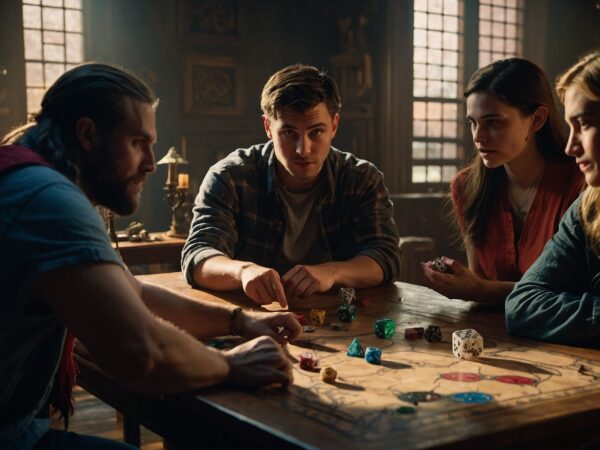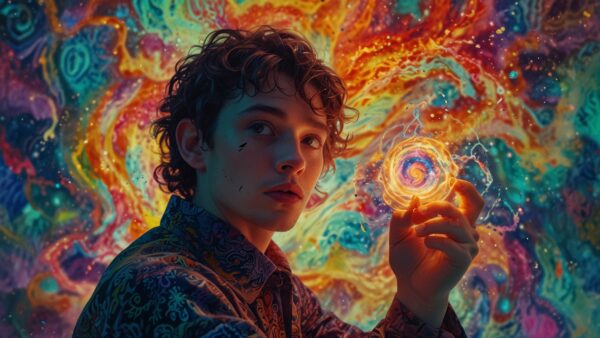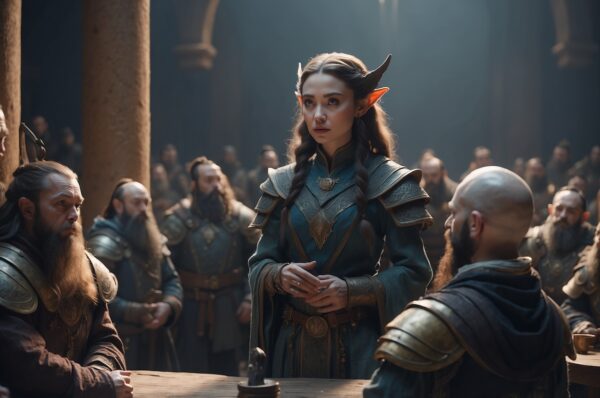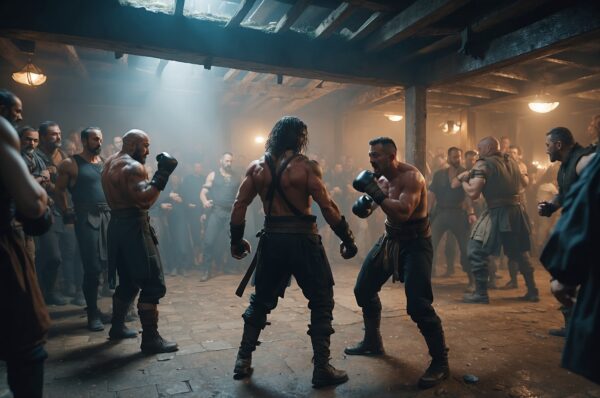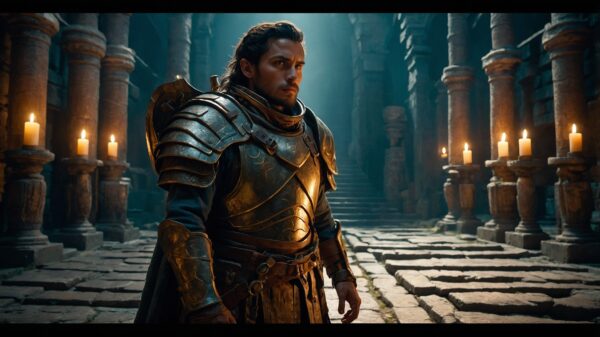The Dungeon Master (DM) is the cornerstone of any Dungeons & Dragons (D&D) game, responsible for orchestrating the adventure and ensuring the players have an exciting, immersive, and memorable experience. If you’re new to D&D or considering stepping into the DM’s role, you might be wondering, what is the role of Dungeon Master in DnD? The answer is both simple and endlessly complex: the DM is a storyteller, referee, and guide who brings the game world to life.
In this article, we’ll break down the key responsibilities of a Dungeon Master, explain how they shape the game, and offer insights into what makes the role so rewarding.
The Role of the Dungeon Master in DnD
The Dungeon Master, often called the DM, is the guiding force behind a game of Dungeons & Dragons. While the players each take on the role of a single character—heroes, rogues, wizards, or warriors—the DM takes responsibility for everything else. They create the world where the story unfolds, describing its people, places, and challenges. Acting as both narrator and referee, the DM weaves the plot, introduces characters for the players to interact with, and presents the obstacles that make the game thrilling, whether it’s a treacherous dungeon filled with traps or a heated negotiation with a suspicious merchant.
Dungeons & Dragons is a collaborative storytelling game, where players work together to navigate the DM’s world, solve problems, and overcome challenges. Unlike video games or board games, there are no rigid paths to follow; the players can choose what to do, and the DM adapts the story to their decisions. Using dice rolls and character abilities, the players determine the outcomes of their actions, while the DM ensures the game remains fair, engaging, and full of surprises.
Aspects of the DM’s Role in the Game
The DM’s role is as much about creativity as it is about facilitating fun. They prepare adventures, manage encounters, and improvise when the players inevitably take the story in unexpected directions. Their ultimate goal is to create an immersive and memorable experience, blending excitement, humor, and drama into a shared narrative that everyone contributes to and enjoys. This includes a few of these duties:
1. World Builder
The DM crafts the world in which the game takes place. Whether you’re running a pre-written adventure or creating your own campaign, the DM:
- Designs the Setting: The DM describes towns, dungeons, forests, and other locations, setting the stage for the story.
- Populates the World: NPCs, monsters, and factions come to life through the DM’s descriptions and roleplaying.
- Establishes Lore: The DM creates the history, rules, and cultural quirks of the world to make it feel immersive.
Example: In a game set in a bustling city, the DM might create a thieves’ guild operating in the shadows or a festival full of eccentric merchants to explore.
2. Storyteller
The DM is the storyteller, weaving narrative threads that guide the players through the adventure. This includes:
- Presenting the Plot: Whether it’s a quest to defeat a dragon or unravel a political conspiracy, the DM introduces the central story.
- Reacting to Player Choices: The DM adapts the story based on what the players decide to do, ensuring their actions have meaningful consequences.
- Creating Tension and Drama: The DM introduces twists, moral dilemmas, and challenges to keep the story engaging.
Example: When the party decides to ally with a rival faction, the DM might alter the story to show how their choice impacts the campaign.
3. Rules Arbiter
One of the DM’s primary roles is to interpret and enforce the rules of the game. While D&D’s rules provide structure, the DM decides how to apply them in the context of the story.
- Clarifies Rules: When players have questions about mechanics or abilities, the DM provides clarity.
- Makes Calls: For situations not covered by the rules, the DM improvises rulings to keep the game moving.
- Balances Fairness: The DM ensures the game is challenging but fair, giving all players opportunities to shine.
Example: If a player wants to leap across a collapsing bridge, the DM might ask for an Athletics check and set the difficulty based on the situation.
4. NPCs and Monsters
The DM controls all characters and creatures that aren’t part of the player party, known as NPCs (non-player characters) and monsters.
- Roleplaying NPCs: From friendly shopkeepers to menacing villains, the DM acts out the personalities and motives of the world’s inhabitants.
- Running Combat: The DM controls monsters during battles, making strategic decisions to challenge the players.
- Building Relationships: Through NPC interactions, the DM deepens the story and creates emotional connections for the players.
Example: A DM might roleplay a charming rogue who becomes an ally—or betrays the party at a critical moment.
5. Challenge Creator
The DM crafts puzzles, traps, and encounters to challenge the players and test their creativity.
- Combat Encounters: The DM sets up battles with appropriate difficulty for the party.
- Puzzles and Mysteries: The DM designs riddles or problems for the players to solve, adding variety to the game.
- Exploration Opportunities: The DM provides moments for players to explore, discover, and interact with the environment.
Example: A DM might design a dungeon filled with hidden traps, locked doors, and treasure guarded by a cunning dragon.
6. Game Facilitator
As the facilitator, the DM ensures that the game runs smoothly and that everyone at the table has fun.
- Manages the Flow: The DM keeps the game moving, balancing combat, roleplay, and exploration.
- Encourages Player Engagement: By tailoring the game to the group’s preferences, the DM keeps players invested in the story.
- Mediates Conflicts: If disagreements arise, the DM helps resolve them fairly and respectfully.
Example: If two players have differing ideas about how to proceed, the DM might introduce an in-game event that pushes the party toward a decision.
What Makes a Great Dungeon Master?
A good Dungeon Master (DM) is the backbone of an unforgettable Dungeons & Dragons campaign. While the role requires preparation and focus, it’s not just about managing rules and keeping the game moving—it’s about creating an engaging experience that draws players into a vibrant world full of adventure, challenge, and storytelling magic. So, what makes a good DM stand out?
Being a Dungeon Master is both an art and a skill. While there’s no one-size-fits-all approach, great DMs tend to excel in the following areas:
- Creativity: Inventing interesting worlds, characters, and scenarios is key to keeping the game engaging.
- Adaptability: Players will always surprise you! A great DM thinks on their feet and embraces the unexpected.
- Fairness: Balancing challenges while ensuring everyone feels included is essential.
- Storytelling: A good story, paired with immersive descriptions and compelling NPCs, makes for unforgettable sessions.
- Empathy: Understanding your players’ needs and making the game fun for everyone is the ultimate goal.
First and foremost, a good DM is creative.
They don’t just present a static world—they breathe life into it. Through evocative descriptions, memorable characters, and intriguing plotlines, they transform a blank map or a handful of ideas into a world that feels alive. Whether it’s a bustling city full of quirky NPCs or a mysterious dungeon filled with danger, their ability to paint vivid scenes in the players’ minds sets the tone for the entire game.
Equally important is adaptability.
Players will inevitably take unexpected actions, derail carefully planned storylines, or try solutions that no one could have predicted. A great DM thrives in these moments, rolling with the chaos and using improvisation to keep the game dynamic and fun. They make the players feel like their choices truly matter, reshaping the narrative to reflect those decisions without missing a beat.
Fairness is another hallmark of a good DM.
While it’s tempting to throw massive challenges at the party, a good DM ensures that encounters are balanced, rewarding clever strategies and teamwork over brute force. They also manage the rules with consistency, providing clear guidance when disputes arise while keeping the focus on fun rather than strict adherence to the rulebook.
Finally, empathy and engagement are what make a DM truly exceptional.
A good DM knows their players and crafts the game to suit their group’s preferences. They understand when to lean into combat for the tacticians, when to focus on puzzles for the problem-solvers, and when to emphasize roleplaying for the storytellers. Most importantly, they foster a welcoming environment where everyone feels included and valued, ensuring that the table becomes a place of shared creativity and camaraderie.
In the end, a good DM doesn’t just run a game—they create an experience. Through preparation, quick thinking, and a commitment to fun, they guide their players on an adventure they’ll be talking about for years to come.
So, what is the role of Dungeon Master in DnD? The DM is the architect of worlds, the storyteller of epic tales, and the guiding force behind the game. While it can seem like a daunting task, it’s an opportunity to unleash your creativity, connect with your players, and craft adventures that everyone will cherish.
If you’ve been considering stepping into the DM’s chair, don’t hesitate—embrace the challenge and start building your world today!


